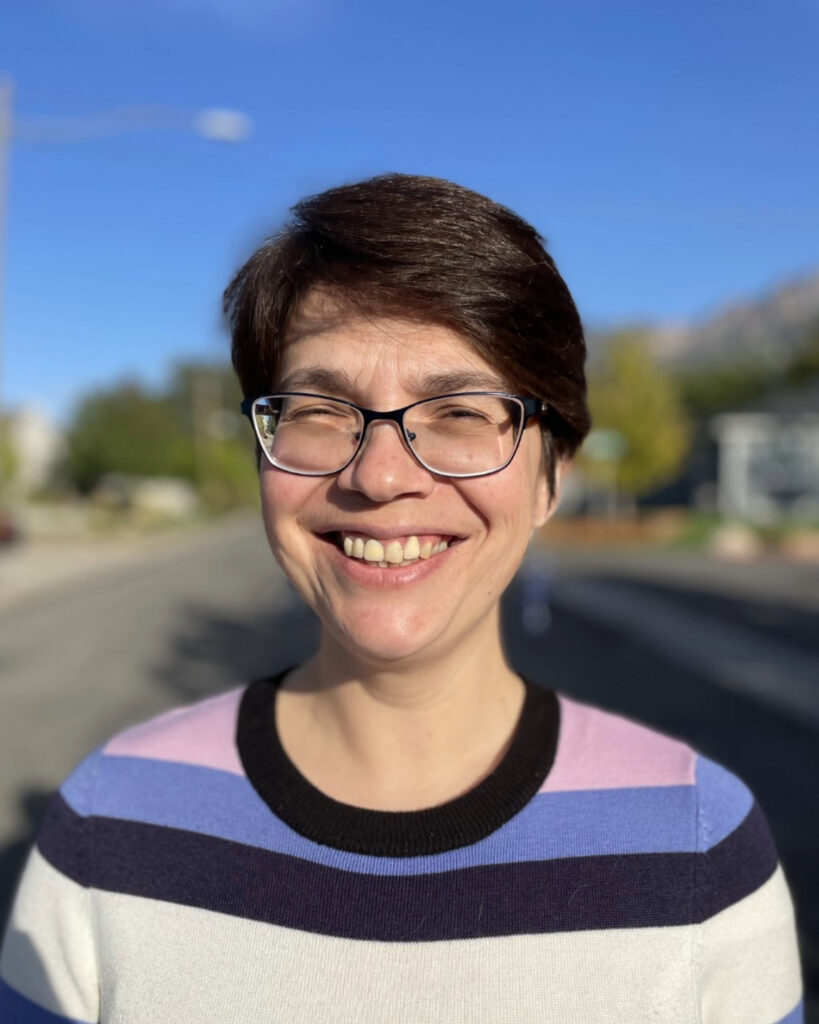LA Stories: Kennedie Wilding'25
June 18, 2025.
Above: Kennedie Wilding at graduation in May 2025
“Beware of becoming a learning assistant; it may transform your life”
 Talk at any length with Kennedie Wilding BS’25, and the takeaway might be this: beware of becoming a learning assistant; it may transform your life. For Wilding that transformation has proven to be nothing short of thrilling.
Talk at any length with Kennedie Wilding BS’25, and the takeaway might be this: beware of becoming a learning assistant; it may transform your life. For Wilding that transformation has proven to be nothing short of thrilling.
A comprehensive physics major (with a minor in mathematics), Wilding currently works in the Gamma-Ray group under Qi Feng where she analyzes telescope data to better understand the properties of a kind of black hole called a blazar and consequently has learned to use tools for data spectral analysis. The blazar is a supermassive black hole that exists in the center of a galaxy and emits powerful, highly variable jets of particles moving close to the speed of light. Because these jets of light are pointed directly towards Earth, the blazar appears exceptionally bright and luminous.
Blazar jets are not the only phenomenon moving close to the speed of light: so is Wilding. Research, classwork and working as a learning assistant have converged for her into a bright and luminous trajectory for herself. “I became a Learning Assistant because I wanted to deepen my understanding of physics while also building connections with faculty and other students,” she says. “I’ve always enjoyed helping people with their homework and explaining science, so it felt like a natural fit.”
The role gave her the opportunity to support students in their learning, making physics more approachable and helping them gain confidence in their problem-solving skills. “It also allowed me to form many new connections within the physics community — from fellow students to faculty members — which has been incredibly valuable both academically and personally.”
Being knee-deep in this galactic environment has inspired her to share her understanding as an LA in both introductory and upper-division physics classes, covering lab and discussion sections. Sometimes she keeps office hours where she provides one-on-one support for students.
Wilding’s ambition grew directly out of her experience as an LA for one of her heroes: physics Ph.D. candidate Anna Christopherson. “She has been an incredible mentor,” says Wilding, “both in teaching and research, and played a big role in inspiring me to pursue my own Ph.D. in physics. Her passion for the subject and dedication to helping students succeed have shown me the kind of educator and researcher I hope to become.”
That kind of life / career transformation for Kennedie Wilding tracks back through much of the time she’s spent as an LA as well as in other pivotal roles and opportunities at the U.
by David Pace
Read about the experiences of other learning assistants and apply for the program here.
 The same property is there for fish too. They know exactly where they're swimming in a three dimensional space, and that helps them navigate.”
The same property is there for fish too. They know exactly where they're swimming in a three dimensional space, and that helps them navigate.”




 As I entered college, I was in renal failure and had two choices: Return home and enjoy the rest of my declining life, or make one last effort to achieve my childhood dream. I chose the latter. I received an auto renal kidney transplant, picked up my textbook and asked myself this question, ‘How far are you willing to go?’ I’m willing to go farther than anyone has before me.
As I entered college, I was in renal failure and had two choices: Return home and enjoy the rest of my declining life, or make one last effort to achieve my childhood dream. I chose the latter. I received an auto renal kidney transplant, picked up my textbook and asked myself this question, ‘How far are you willing to go?’ I’m willing to go farther than anyone has before me.





